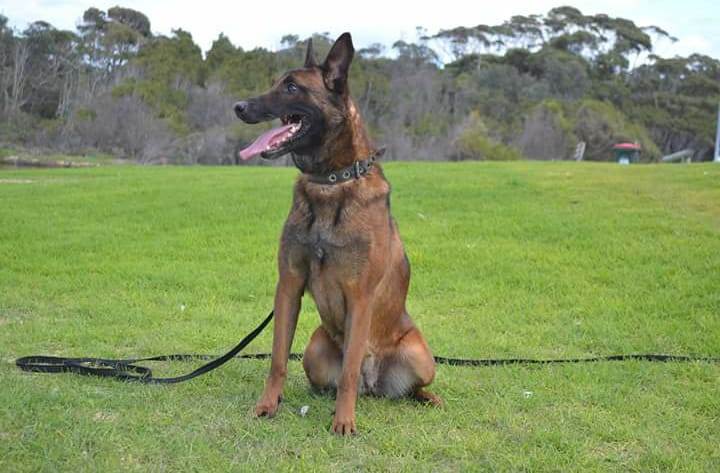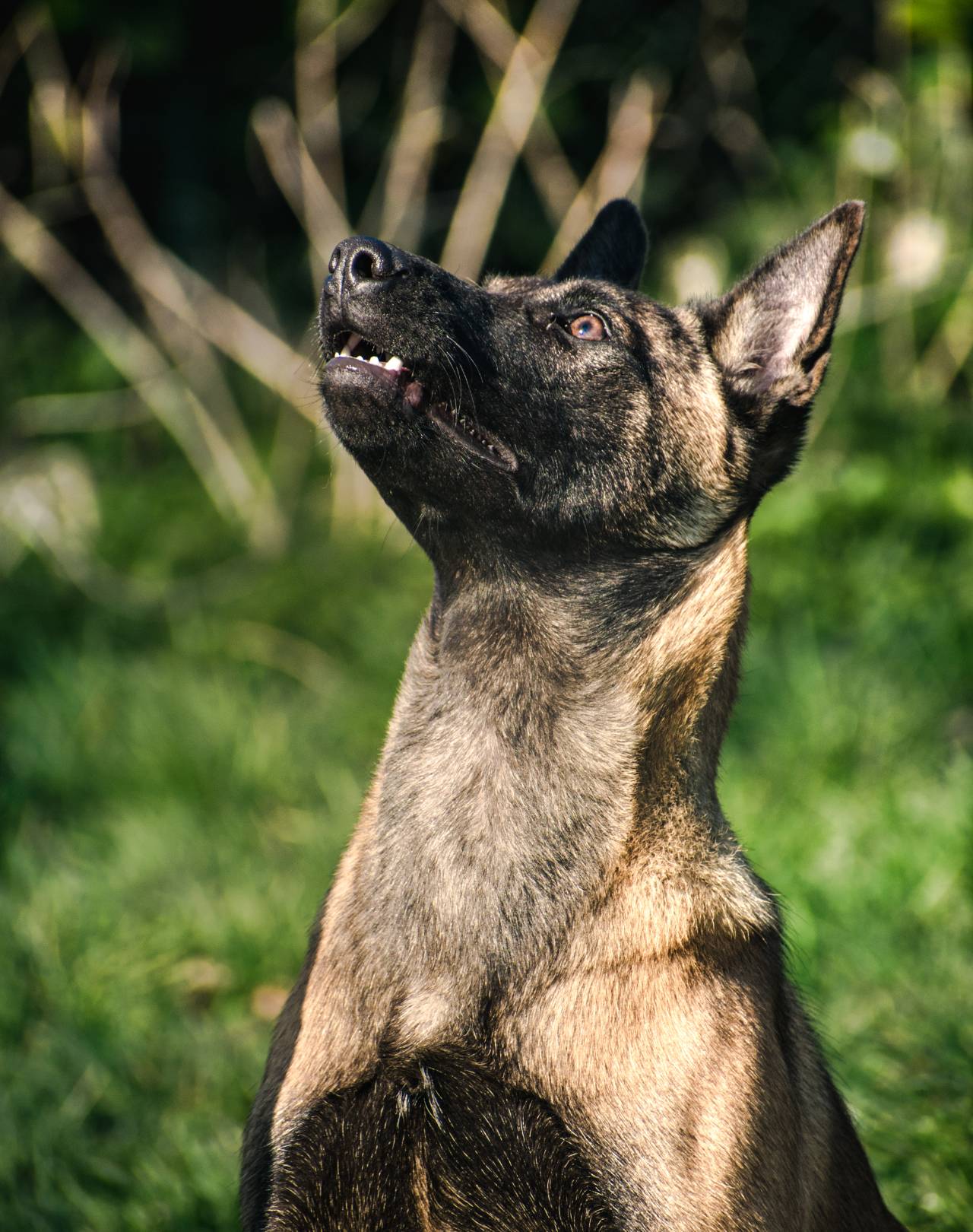Why Belgian Malinois Are Now Preferred as Police Dogs
When discussing police dogs, the first breed that often comes to mind is the German Shepherd. For decades, German Shepherds have been synonymous with law enforcement and protection work.
However, in recent years, a new contender has emerged and is increasingly being used in police work: the Belgian Malinois. Known for their agility, intelligence, and unwavering loyalty, Belgian Malinois are becoming the go-to choice for police and military forces worldwide.
This article will explore why Belgian Malinois have gained popularity as police dogs, focusing on their characteristics, history, and the specific advantages they offer in law enforcement roles.
At K10 Workingdogs in the Netherlands we train and sell many Belgian Malinois Police Dogs. Please feel free to contact us any time !

The History and Origins of Belgian Malinois
The Belgian Malinois (pronounced Mal-in-wah) originates from Belgium, where it was bred in the late 19th century as a working dog. It belongs to the larger family of Belgian Shepherds, which includes four distinct breeds: the Malinois, Tervuren, Laekenois, and Groenendael. The Malinois was bred specifically for herding and guarding livestock, a role that demanded strength, endurance, and intelligence.
Over time, the breed’s exceptional qualities caught the attention of law enforcement and military personnel, who began training Malinois for various roles, including search and rescue, detection, and patrol work. The breed’s high work drive and natural instincts made it an ideal candidate for demanding tasks.
Key Characteristics of the Belgian Malinois
Intelligence and Trainability
One of the standout traits of the Belgian Malinois is its intelligence. The breed ranks among the smartest working dogs, capable of learning complex commands and adapting quickly to various situations. This intelligence makes them highly trainable, which is a critical factor for police work. In high-pressure environments where quick decision-making is essential, Belgian Malinois can swiftly respond to commands and take appropriate action.Work Drive and Energy
Belgian Malinois have an incredible work drive, often described as “boundless energy.” Unlike some other breeds, Malinois don’t tire easily and are eager to work for extended periods. This endurance is vital in police work, where dogs may be required to track suspects, patrol large areas, or engage in search-and-rescue missions over long durations. Their focus and determination allow them to stay on task, even in challenging environments.Loyalty and Protective Instincts
Loyalty and a strong protective instinct are inherent traits of the Belgian Malinois. These dogs form close bonds with their handlers and are naturally inclined to defend them, making them perfect for situations that require personal protection or patrol work. Malinois have a strong “pack mentality,” meaning they will protect those they consider part of their family, which is crucial in dangerous police operations.Agility and Speed
One of the most distinguishing physical attributes of the Belgian Malinois is its agility and speed. They are lean, muscular dogs capable of running at high speeds and navigating through obstacles with ease. This agility makes them highly effective in pursuits or situations where suspects attempt to flee or hide. Their athletic build also allows them to climb, jump, and maneuver in environments that would challenge less nimble breeds.
Why Belgian Malinois Are Now Used as Police Dogs
Versatility Across Various Police Roles
Belgian Malinois have proven to be versatile across a wide range of police roles. From tracking and detection to apprehension and protection, they are capable of performing various tasks that law enforcement agencies require. They are commonly used in:K9 Units for Drug and Explosive Detection
With their keen sense of smell, Belgian Malinois are frequently trained to detect narcotics, explosives, and other illicit substances. Their ability to search large areas quickly and accurately has made them invaluable in airports, border patrol, and counterterrorism units.Search and Rescue Missions
Belgian Malinois are increasingly being used in search and rescue operations. Their agility and stamina allow them to cover rough terrain and search for missing persons over long periods. These dogs are highly effective in both urban environments and natural disaster scenarios, such as after earthquakes or floods.Suspect Apprehension
In suspect apprehension, Malinois are second to none. Their speed, strength, and obedience make them perfect for pursuing and subduing suspects. Once they catch up to a fleeing suspect, they are trained to hold the individual in place without causing significant harm, which helps police officers safely take control of the situation.
Lighter Build Compared to German Shepherds
While German Shepherds have long been the standard for police work, one factor that has contributed to the growing use of Belgian Malinois is their lighter build. On average, Malinois weigh between 50 and 70 pounds, compared to German Shepherds, which can weigh up to 90 pounds or more. This lighter weight allows Malinois to be more agile and faster in certain police operations. Moreover, their smaller size can be beneficial when police dogs need to enter confined spaces, such as during building searches or urban operations.Health and Longevity
Another advantage of Belgian Malinois over German Shepherds is their general health and longevity. German Shepherds, particularly those with poor breeding practices, are prone to hip dysplasia, which can limit their effectiveness as working dogs later in life. While no breed is immune to genetic health issues, Belgian Malinois are less prone to hip dysplasia and tend to have longer working careers as police dogs. Their overall robustness and vitality are key factors in their selection for long-term use in K9 units.Resilience in High-Stress Situations
Belgian Malinois are known for their calm demeanor in high-stress situations. Whether it’s responding to gunfire, large crowds, or other chaotic environments, Malinois can remain focused and undistracted. Their resilience makes them well-suited for crowd control, riot management, and SWAT operations. In intense situations where human officers might falter, these dogs maintain their composure, allowing them to act as a reliable asset.
Training Belgian Malinois for Police Work
The process of training a Belgian Malinois for police work is intensive and rigorous, often taking months of specialized programs to complete. These dogs are hand-selected for their temperament, drive, and physical attributes before undergoing extensive training that includes obedience, protection, detection, and pursuit exercises.
Early Socialization and Basic Obedience
Training typically begins with socialization to ensure the dog can work comfortably in a variety of environments and around different types of people. Obedience training is also essential at this stage, teaching the Malinois to respond reliably to commands.Specialized Training for Detection or Patrol
After mastering the basics, the dogs undergo specialized training depending on their intended police role. For example, a dog trained for drug detection will learn to recognize the scent of illegal substances and alert its handler, while a patrol dog will focus on suspect apprehension and protection.Ongoing Training and Certification
Even after their initial training, Belgian Malinois require ongoing instruction to maintain their skills. Police dogs must regularly pass certification tests to remain active in the field, ensuring they are always ready for action.
Conclusion: The Future of Belgian Malinois in Law Enforcement
Belgian Malinois have quickly become a favored breed in law enforcement for many compelling reasons. Their intelligence, loyalty, agility, and overall resilience make them ideally suited to the demands of police work. As the nature of crime and law enforcement continues to evolve, the Belgian Malinois is likely to remain a key asset in K9 units around the world. Their combination of speed, strength, and trainability ensures that they are not just a substitute for traditional police dogs like the German Shepherd but a breed that excels in its own right.
Whether in drug detection, suspect apprehension, or search and rescue, the Belgian Malinois has proven time and again that it is one of the best breeds for modern police work. As more law enforcement agencies recognize the breed’s capabilities, we can expect the Belgian Malinois to play an even larger role in maintaining public safety.


